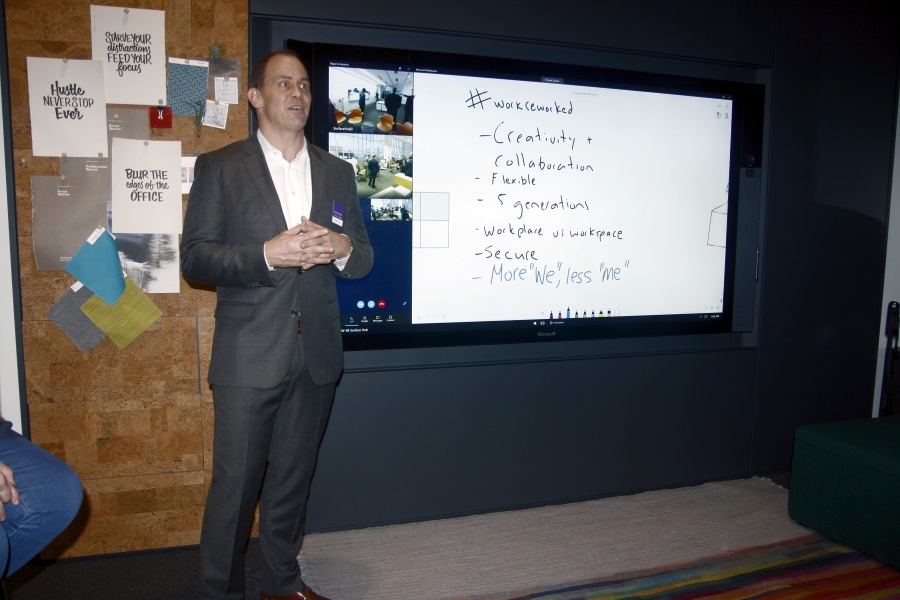
Microsoft Canada and Steelcase recently invited us to visit the Steelcase WorkLife Center in downtown Toronto, a concept office that functions both as a showcase for the former’s hardware and latter’s office furniture, and as a collaborative retreat for employees who happen to be downtown and need a place to get some work done. The idea, Microsoft modern workplace general manager Jordan Sheridan (above) told us, was to design a creative workspace where the human, process-based, and technological elements complemented each other, rather than being awkwardly grafted on top of one another. Take a look.
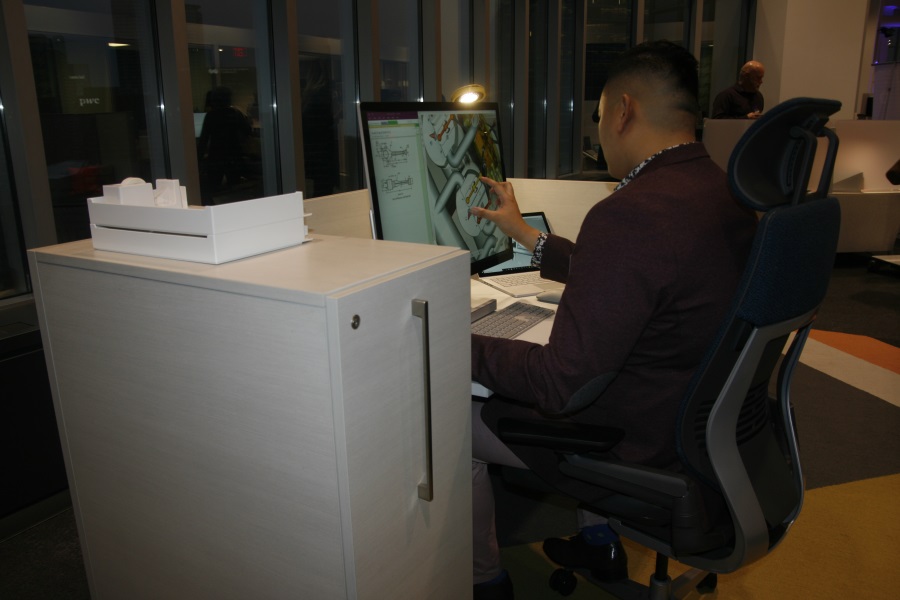
The first stop on our tour was the so-called focus studio. While the WorkLife Center is not lacking in collaborative space, this section is all about individual work. “Sometimes you need to get things done, and you have to be able to focus,” our guide, Steelcase director of global research communications Christine Congdon, told us. And while our model happened to be working intently at his seat height when we came to visit…
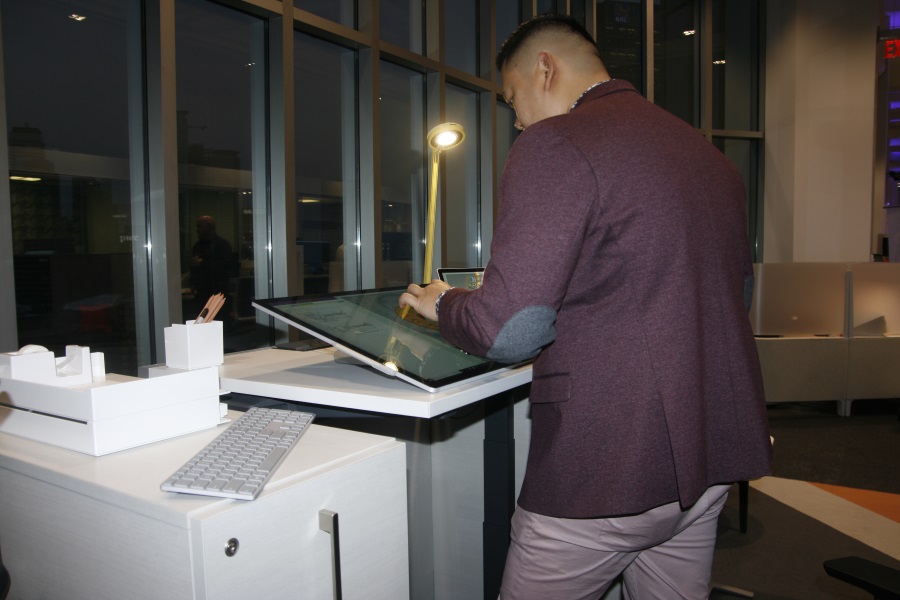
…His desk is adjustable, should he decide to take advantage of his Surface Studio from a more architect-friendly standing height. Note the storage compartment to his left, which slides out for easy access.
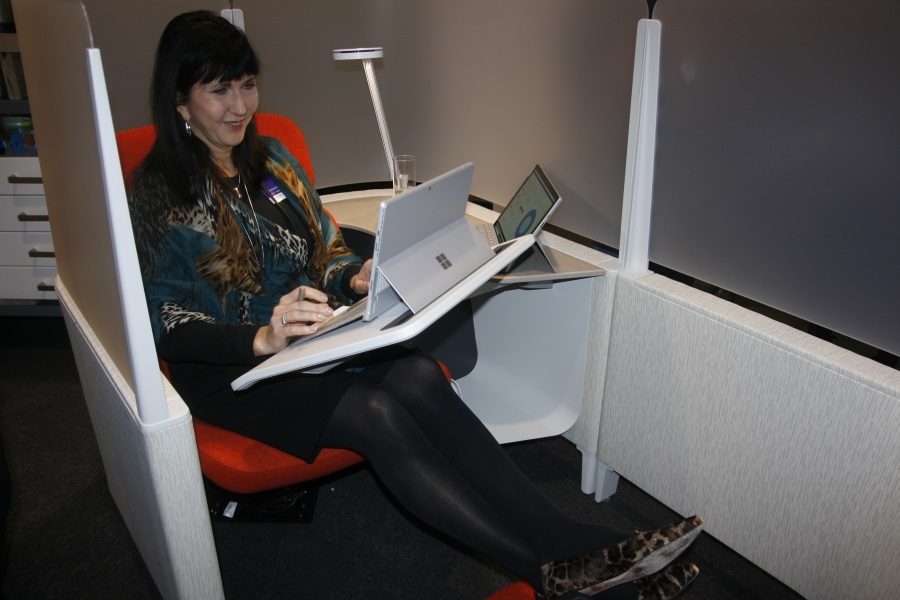
“There are times when you want to get away from everybody… and you can’t always have four walls and a roof and a door,” Steelcase vice president of communications Gale Moutrey (not pictured) said. This pod-like arrangement, known as BRODY (since it’s good for your BRain and bODY), is one compromise. According to Moutrey, Steelcase patterned this chair/recliner/desk hybrid based on the habits of university students, who will slide chairs around until they have an arrangement they’re comfortable with. Congdon’s position here is known as “alert reclined” – more relaxed than sitting at a desk, but not enough to snooze.
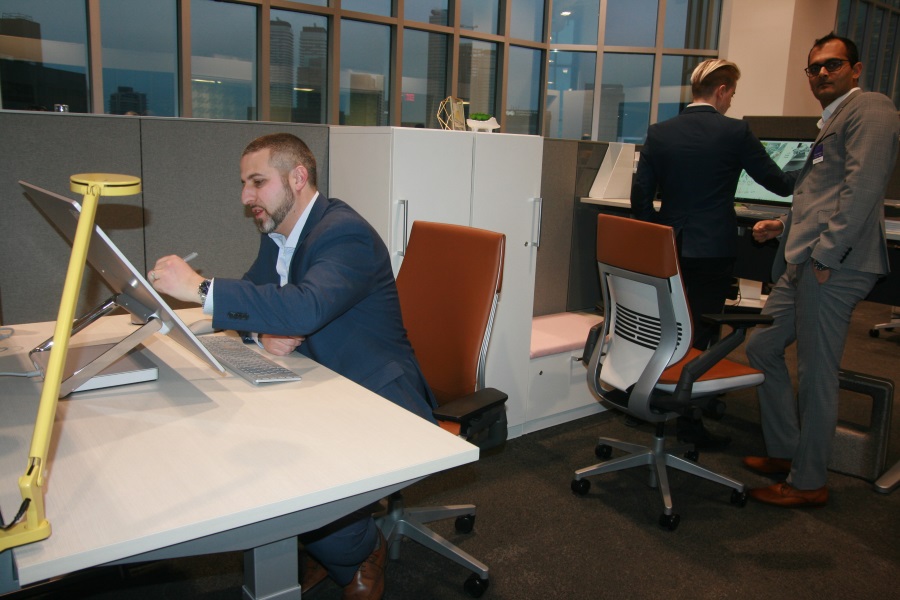
“Particularly in the technology field, there are a lot of working duos,” Moutrey told us during the tour. The idea behind this particular “micro-zone,” which features two Surface Studio tablets connected with each other, is that two coworkers are given the freedom to work on their own as easily as they collaborate (both tablets feature the same screen, with each demonstrator able to see whatever marks the other makes with their electronic pen)…
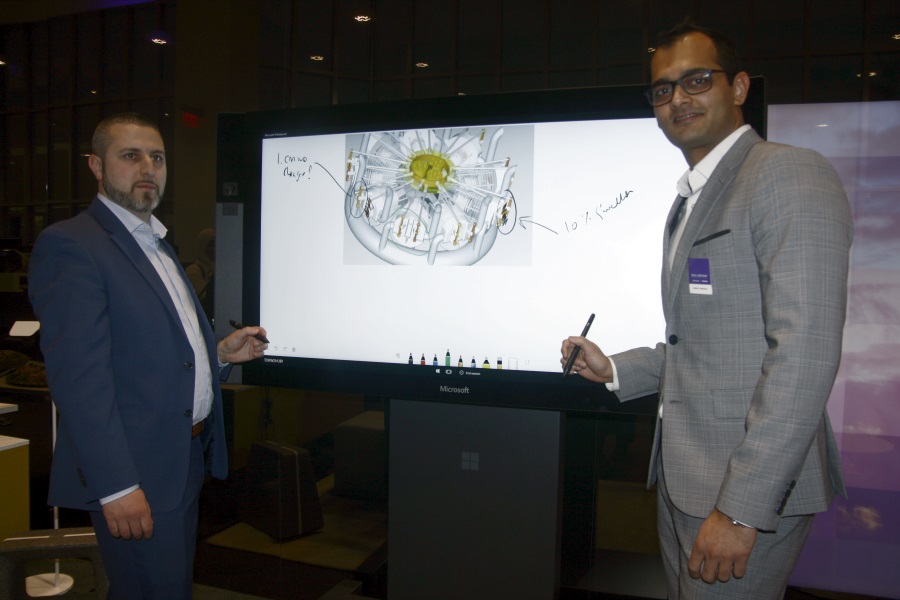
…And to present their work at a nearby connected 70-inch whiteboard as easily as they collaborate.
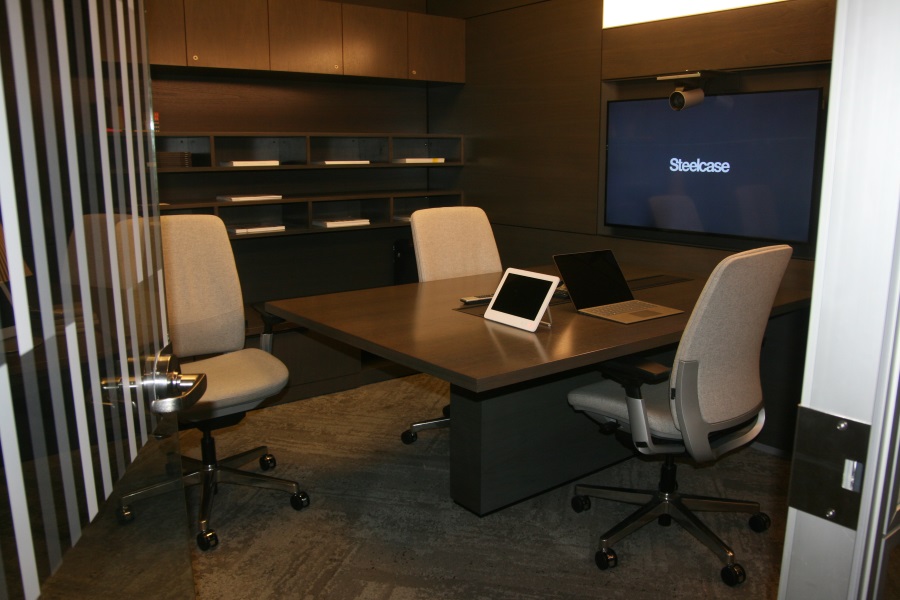
There are, of course, more traditionally collaborative workspaces too, both sequestered…
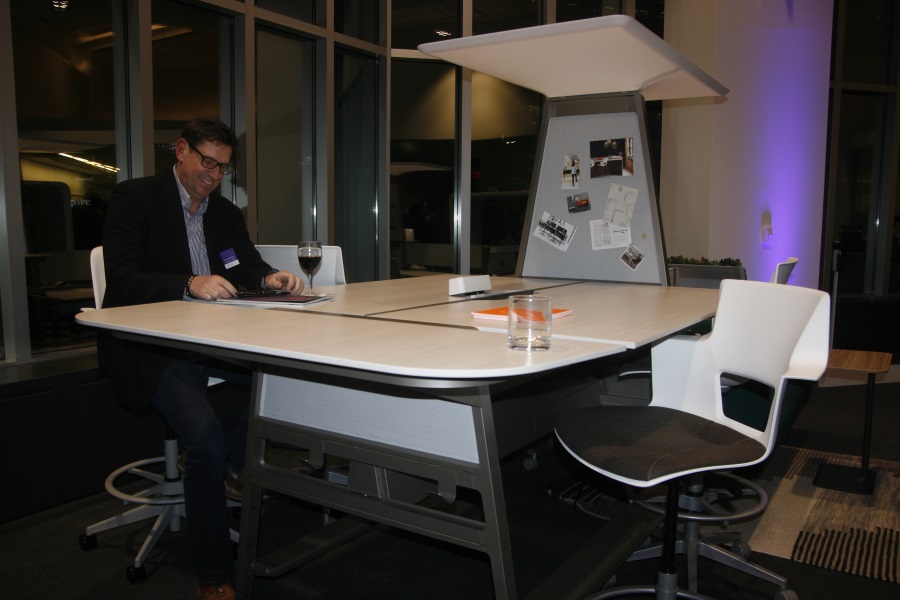
…And not.
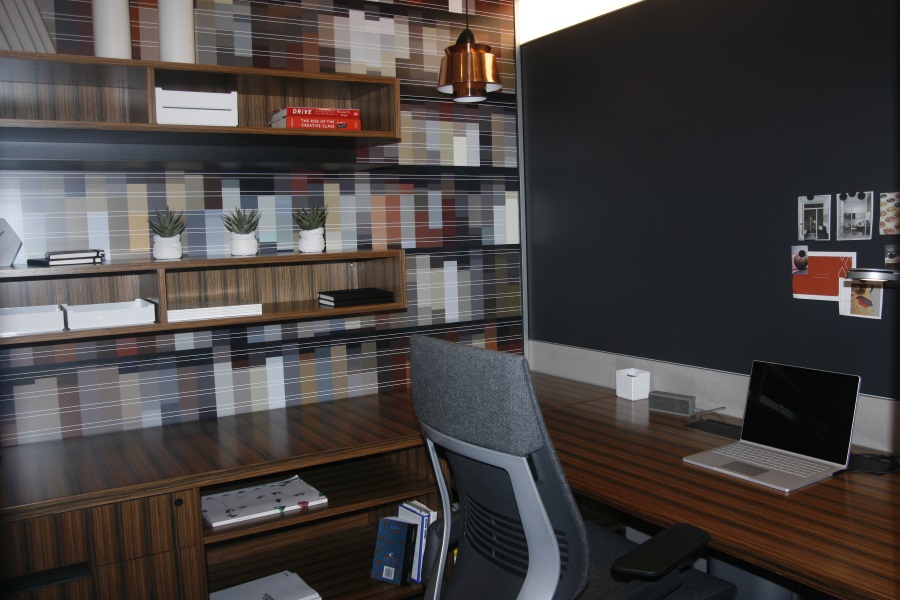
Visitors can claim a corner office of their very own too!
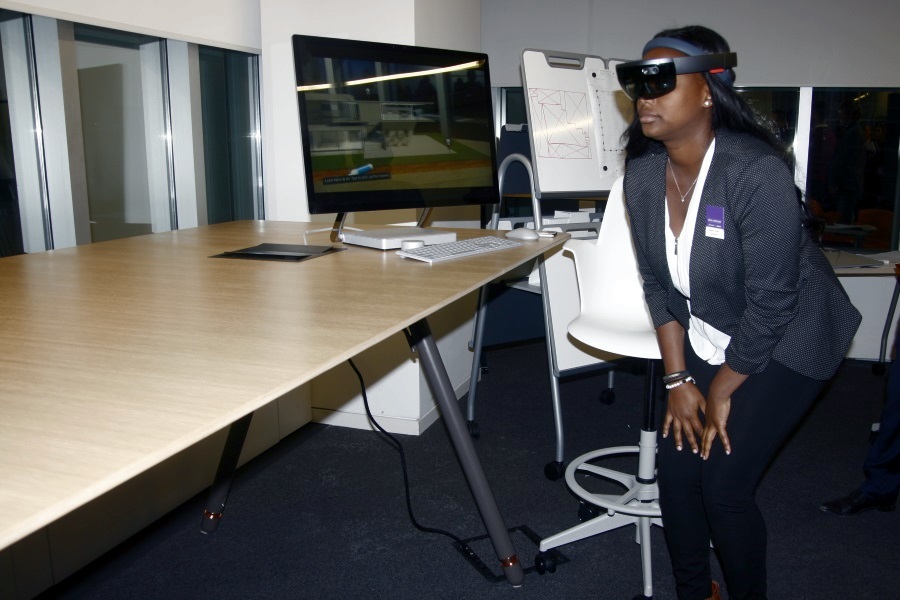
On the other side of the centre was a collaboration and design studio set up to accommodate architecture and design work. Here, a drafting table has been replaced by a Surface Studio tablet, which the demonstrator can easily lay on its side and draw on using an electronic pen. Then, instead of printing off drafting pages, she can easily view your plan in three dimensions using a HoloLens. “The idea is that she’s able to view the changes she just made not just in two dimensions, but three, giving her a better understanding of what she’s trying to do,” Microsoft Canada HoloLens and mixed reality lead Michael Thibodeau said.
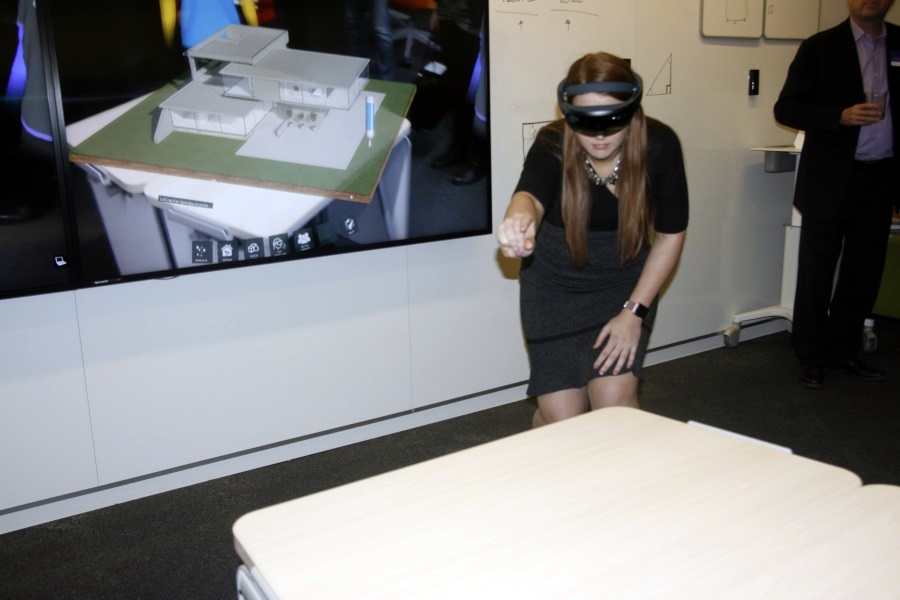
And here we have a similar arrangement, but with a different purpose: This demonstrator is collaborating with an engineer in Calgary, whom she’s able to collaborate with through Skype and “see” standing next to her using a HoloLens (you can see his avater on the screen behind her). “They can hear us, they can see us, and they can see the design in real time,” Thibodeau said during the tour. “You collaborate and re-iterate a lot faster using these real-time 3D tools… and we save time and money by not transferring files or flying them out.”
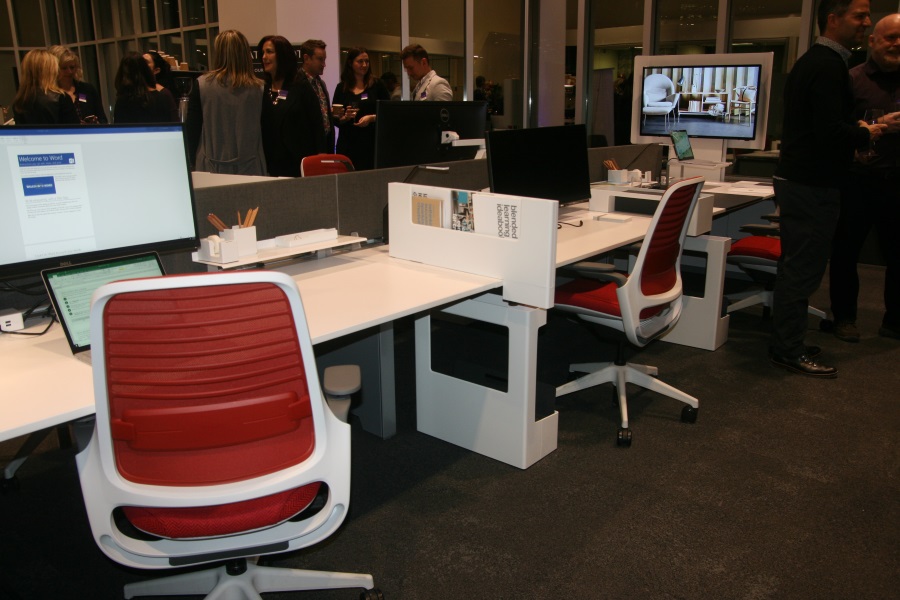
Other examples from Steelcase’s collaborative catalogue abound at the center, from the company’s take on cubicles…
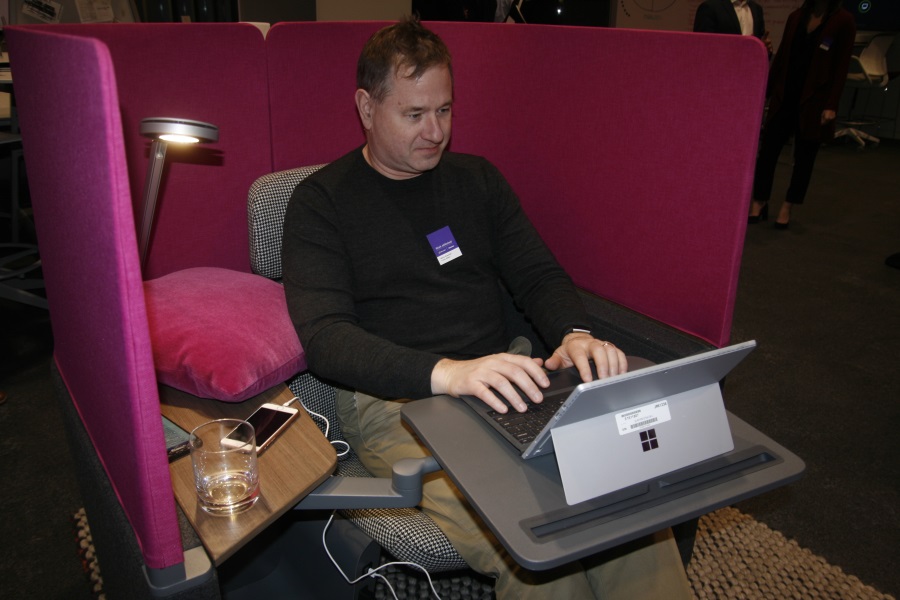
…To this more relaxing version of its BRODY seat.
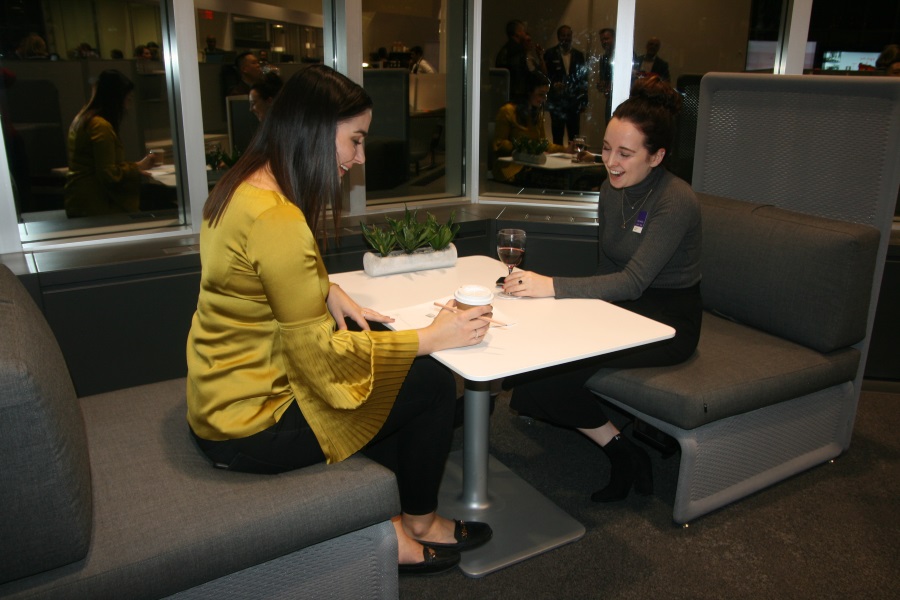
The goal throughout the centre is to accommodate creative work – which, according to Steelcase’s Congdon, is performed by just about everyone. “Everyone who solves a problem is doing creative work,” she said. “Creative work isn’t just for guys in black turtlenecks and designers; creative work is done by accountants, by facility managers; by journalists – anybody who has a problem to solve is inherently doing creative work.” And if they happen to be in downtown Toronto, at least, there’s a creative space for them to conduct it.
